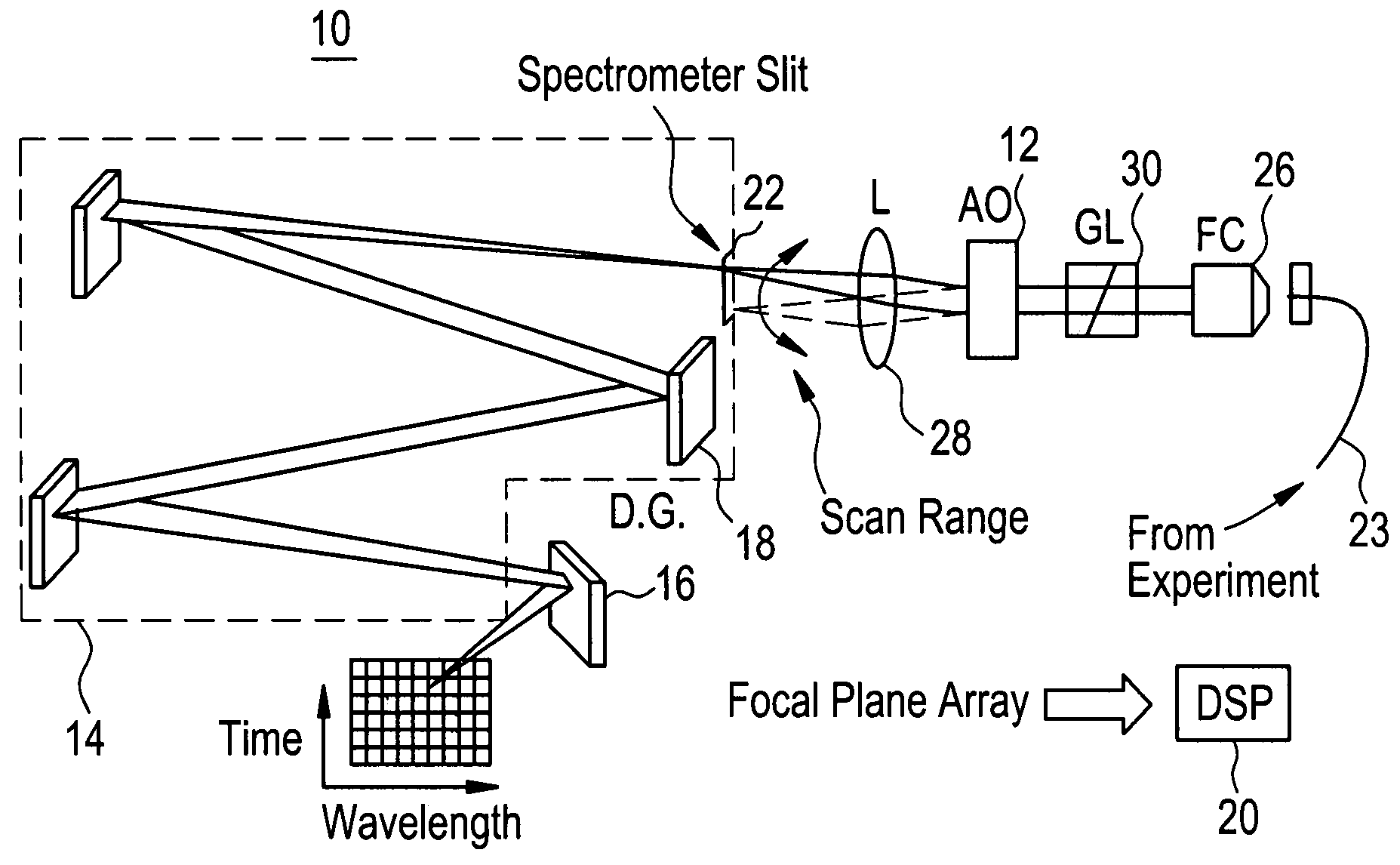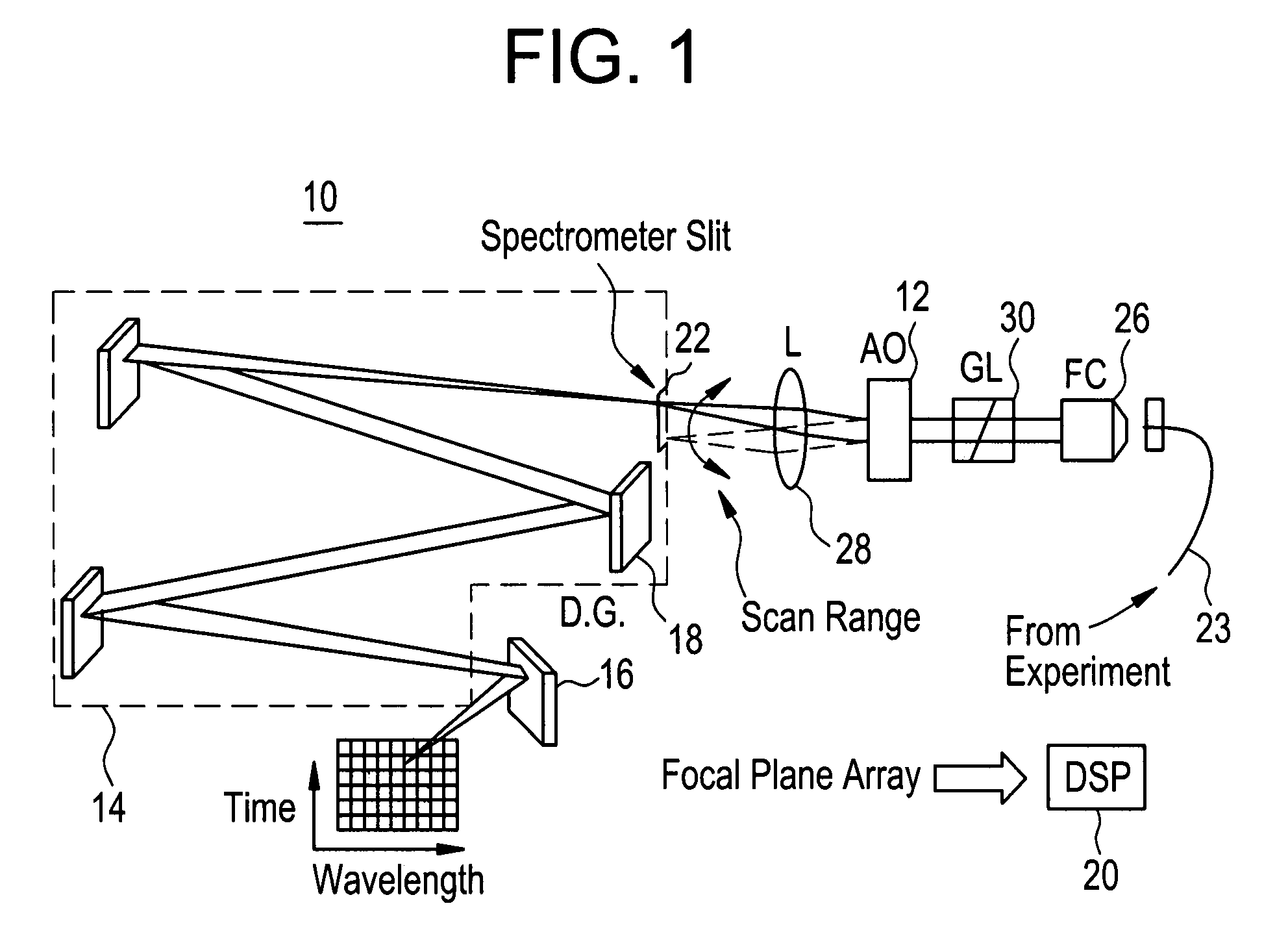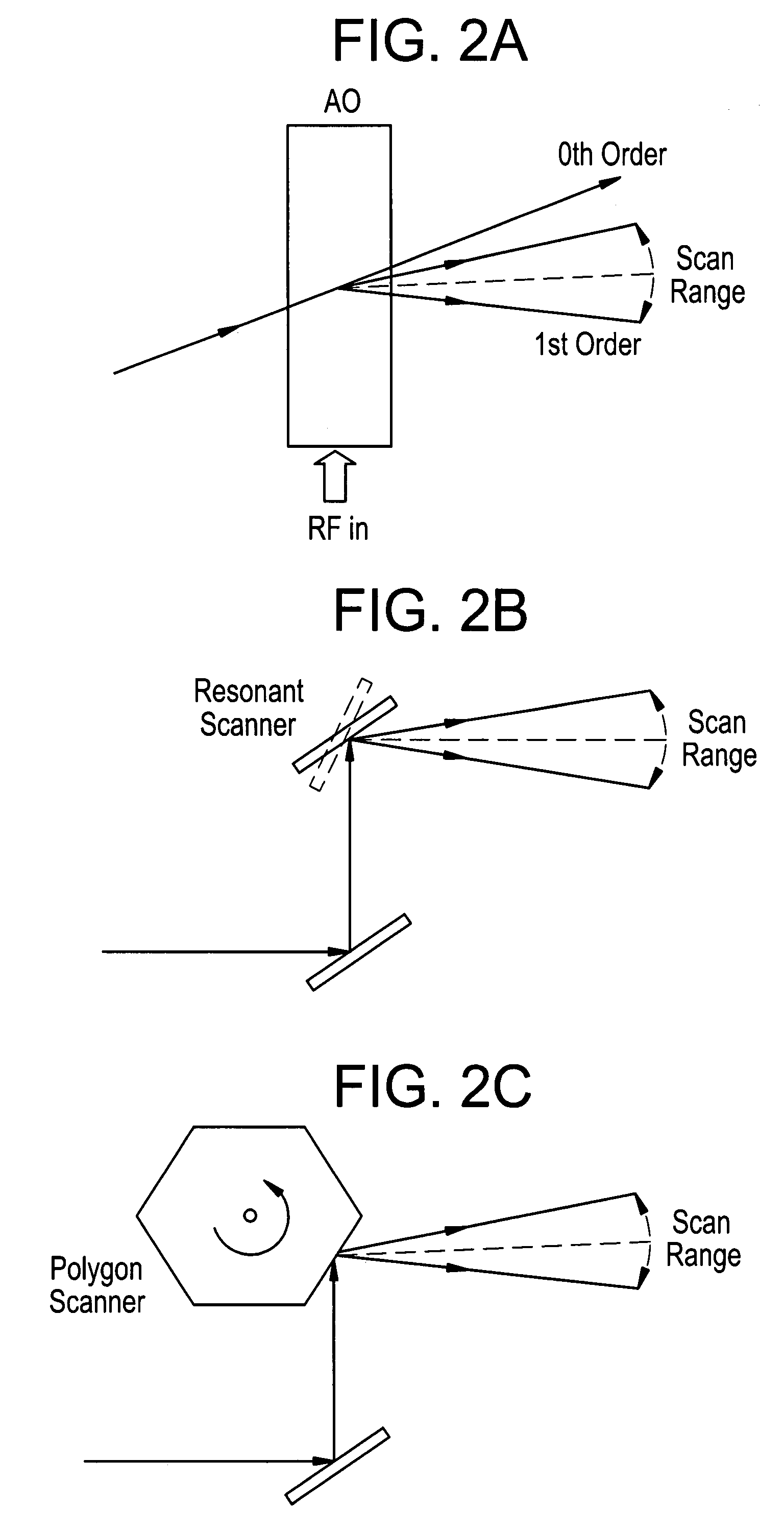Multi-channel dual phase lock-in optical spectrometer
a dual-phase lock-in, optical spectrometer technology, applied in the field of optical spectroscopy, can solve the problems of inconvenient parallelization of lock-in techniques, limited frequency range, and less effective bandwidth narrowing methods
- Summary
- Abstract
- Description
- Claims
- Application Information
AI Technical Summary
Benefits of technology
Problems solved by technology
Method used
Image
Examples
Embodiment Construction
[0018]An optical system 10 of the first embodiment is shown in FIG. 1. The system includes a light deflector 12 which is adapted to deflect light in a particular direction as a function of time. For example, this may be a vertical direction. However, other directions, such as horizontal may also be used. The system 10 also includes a spectrometer 14 which is adapted to separate light according to wavelength in a direction which is different from the direction of the light deflected by the light deflector. For example, if the deflector 10 deflects the light in a vertical direction, then the spectrometer may separate the deflected light in a horizontal direction. However, other separation directions are also possible. The system also contains a two dimensional photodetector array 16, which is generally referred to herein as a focal plane array.
[0019]The focal plane array 16 is adapted to detect the light separated according to wavelength by the spectrometer 14 along a first direction ...
PUM
 Login to View More
Login to View More Abstract
Description
Claims
Application Information
 Login to View More
Login to View More - R&D
- Intellectual Property
- Life Sciences
- Materials
- Tech Scout
- Unparalleled Data Quality
- Higher Quality Content
- 60% Fewer Hallucinations
Browse by: Latest US Patents, China's latest patents, Technical Efficacy Thesaurus, Application Domain, Technology Topic, Popular Technical Reports.
© 2025 PatSnap. All rights reserved.Legal|Privacy policy|Modern Slavery Act Transparency Statement|Sitemap|About US| Contact US: help@patsnap.com



